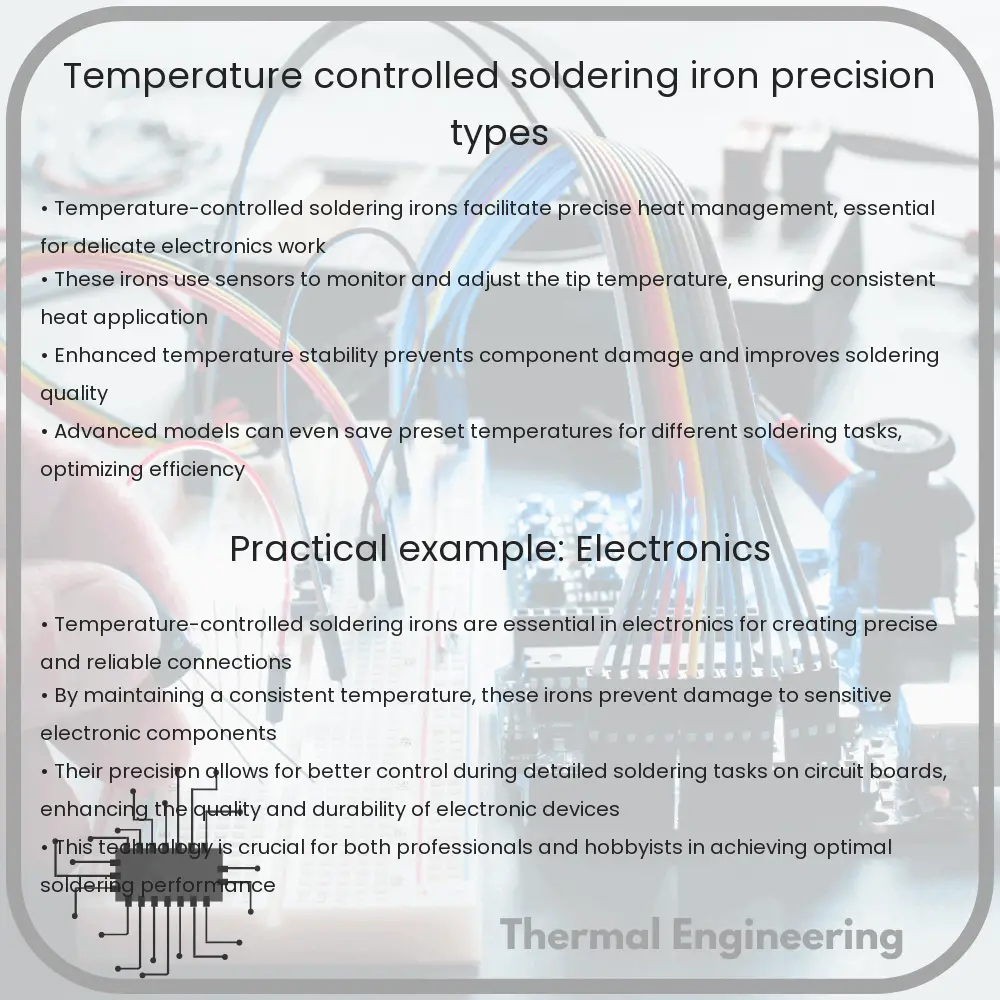Learn about temperature controlled soldering irons, their operation, advantages, and how to choose the right one for precise electronic projects.

Understanding Temperature Controlled Soldering Irons and Their Precision Types
Temperature controlled soldering irons are essential tools in both DIY electronics and professional engineering. They allow for the adjustment of the iron’s tip temperature, providing the user with the capability to work on a variety of soldering projects with precision and safety.
How Does a Temperature Controlled Soldering Iron Work?
The basic principle behind a temperature controlled soldering iron is the use of a feedback loop system which includes a sensor, a control unit, and a heating element. The sensor, typically a thermocouple or a thermistor, detects the temperature of the soldering iron’s tip. This information is sent to the control unit, which then adjusts the power to the heating element based on the target temperature set by the user.
Advantages of Temperature Control
- Precision: By allowing the user to set and maintain an exact temperature, these irons ensure that the solder melts properly without damaging sensitive components due to excessive heat.
- Consistency: Stable temperature improves the consistency of solder joints, which is crucial for reliable electronic circuits.
- Versatility: Adjustable temperatures mean the same soldering iron can be used for different types of solder, projects, or materials.
- Safety: Reducing the risk of overheating protects both the user and the components being soldered.
Types of Temperature Sensors Used in Soldering Irons
- Thermocouples: These sensors are known for their rapid response time and wide range of temperatures. They work based on the Seebeck effect, where a voltage is generated proportional to the temperature difference between two different metals.
- Thermistors: Typically more accurate than thermocouples within a limited temperature range, thermistors vary their resistance with temperature changes.
Choosing the Right Temperature Controlled Soldering Iron
When selecting a temperature controlled soldering iron, consider the following factors:
- Temperature range and stability: Make sure the iron can reach and maintain the temperatures required for your specific soldering needs.
- Recovery speed: This refers to how quickly the soldering iron can return to the desired temperature after each solder joint.
- Ergonomics: An ergonomically designed handle will reduce fatigue in prolonged soldering sessions.
- Tip options: Availability of different tips can greatly enhance the versatility of the soldering iron.
Temperature controlled soldering irons are invaluable tools in electronics for ensuring high-quality results. With the right soldering iron, you can increase the precision and reliability of your electronic projects, while also ensuring the safety and longevity of your electrical components.
Conclusion
Understanding the mechanics of temperature controlled soldering irons and the precision provided by different types can significantly impact the quality of your soldering projects. Whether you’re a hobbyist or a professional, investing in a good quality temperature controlled soldering iron is a step towards achieving perfect solder joints every time.